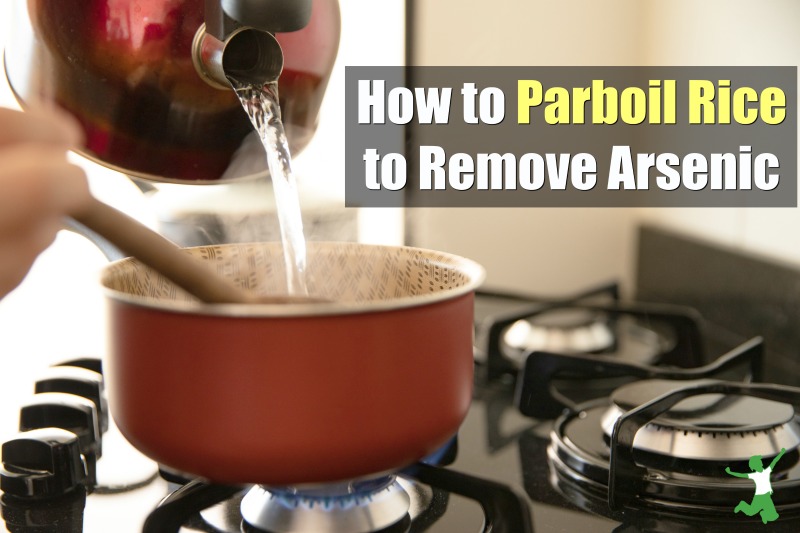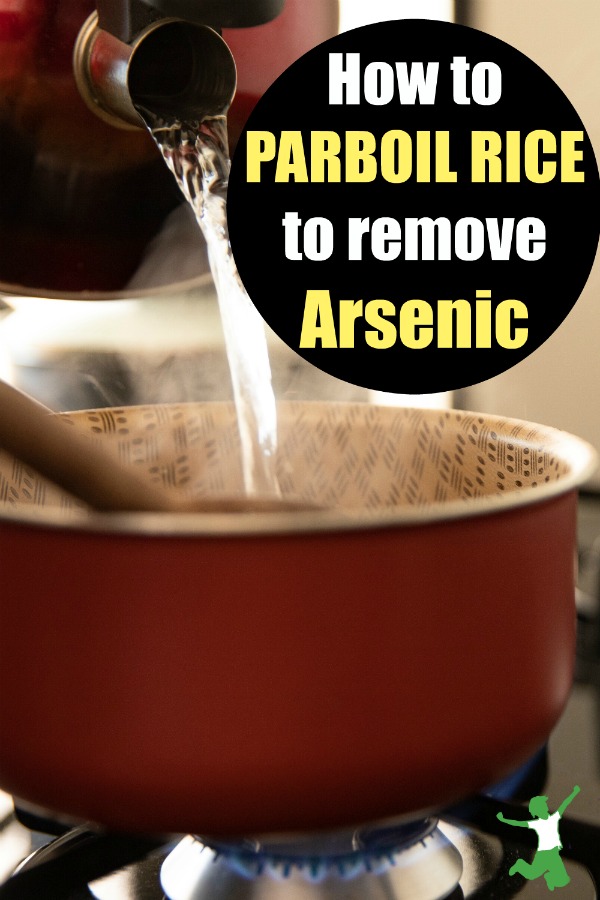Table of Contents[Hide][Show]

Rice is a staple food for more than half of the world’s population. Alarmingly, arsenic is a widespread contaminant in rice crops that is getting increased attention as a risk factor in the development of cancer.
Studies in recent years have focused on testing various cooking techniques as a way to reduce levels of this heavy metal in brown and white rice. Parboiling and then refreshing the water before cooking is the most recent method yielding encouraging results.
Parboiling with Absorption Method
What is parboiling? This cooking technique involves boiling food briefly as the first step in cooking.
When parboiling rice, scientists from the peer-reviewed journal Science of the Total Environment suggest a variation called “parboiling with absorption method” or PBA as the best approach for lowering arsenic levels. (1)
This method also enhances beneficial levels of resistant starch.
To implement PBA in your home kitchen, simply cook brown or white rice in pre-boiled water for five minutes. In other words, bring the water to a boil before adding the rice.
Then, drain the rice and refresh it with cool water. The last step is to simmer the rice on a lower heat until all the water is absorbed.
Dr. Manoj Menon and his team of researchers found that parboiling in this manner removes over 50% of the arsenic in brown rice and 74% in white rice. In addition, micronutrient levels remain unchanged. (2)
Soaking Rice vs Parboiling
While implementation of the parboiling with absorption method is certainly fast and convenient, it is important to realize that soaking rice before cooking is a superior method to remove the most arsenic possible.
To accomplish this, researchers recommend mixing five parts water to one part rice and soaking for several hours. Then, the soaking liquid is discarded and the rice is rinsed thoroughly. Finally, rice is cooked as usual in fresh water. These steps combine to reduce arsenic levels by 80%. (3)
The safety of using rice water for gastroenteritis is significantly enhanced by taking this precautionary step as well.
In sum, it is best to employ an extended soak and rinse before cooking to ensure the safest pot of rice possible. This technique also produces the additional benefit of highly digestible rice for maximum mineral absorption.
However, it’s good to know that a quick, five minute parboil followed by cooking the rice in fresh water will produce nearly the same results on busy days.

References
(1) Improved rice cooking approach to maximize arsenic removal while preserving nutrient elements
(2) New way of cooking rice removes arsenic and retains mineral nutrients, study shows
(3) Should I worry about arsenic in my rice?








This article was very helpful
This article was very helpful. Thank the author very much.
How much water do you add in the final boil? 1:1 ratio?
I tried it last night and just estimated and it worked fine.
Very useful information, thanks!
I have been using a method for reducing physic acid in brown rice reported by Stephen Guyenet here: http://wholehealthsource.blogspot.com/2009/04/new-way-to-soak-brown-rice.html?m=1
If I want to focus on arsenic reduction as well, do you think it would be best to soak the rice for several hours in a 5:1 water to rice ratio PRIOR to using the method mentioned in Guyenet’s article or the other way around?
Thanks!
You mentioned PBA in our kitchen, aren’t we trying to get PBA out of our lives, is this something different to PBA from plastic?
You’re thinking of BPA which is a type of plastic. PBA is short for “parboiling with absorption method”.
Does cooking your rice in the Instant pot take the arsenic to a safer level ?
Not if you don’t soak or parboil first and dump the water/rinse the rice before cooking in the Instant Pot.
Regarding rice that has been sprouted — since to sprout takes time and many rinses — would the arsenic level still be high as if not
soaked…Or would you still need to preoak or parboil….thanks for any answer on this.
g
There isn’t any research to provide an answer that I can find currently. Certainly the soaking necessary to sprout the rice would remove arsenic, but how much is a guess right now.
Any advantage to combining the two methods? Soak and parboil?
I haven’t seen any research yet that combines the two methods. I would guess that it would at least marginally improve the results.
Does all rice contain arsenic even organic rice?
Organic is not a 100% guarantee of a clean product unless the company batch tests the rice to make sure the product is arsenic free. The reason is that arsenic is water soluble so even if the rice is grown organically, if the water that floods the paddies or soil has arsenic in it, so will the organic rice. If you aren’t sure that the company you buy from tests or you can’t afford organic rice which is quite a bit more expensive than regular rice, be sure to soak or at the very least, parboil it.